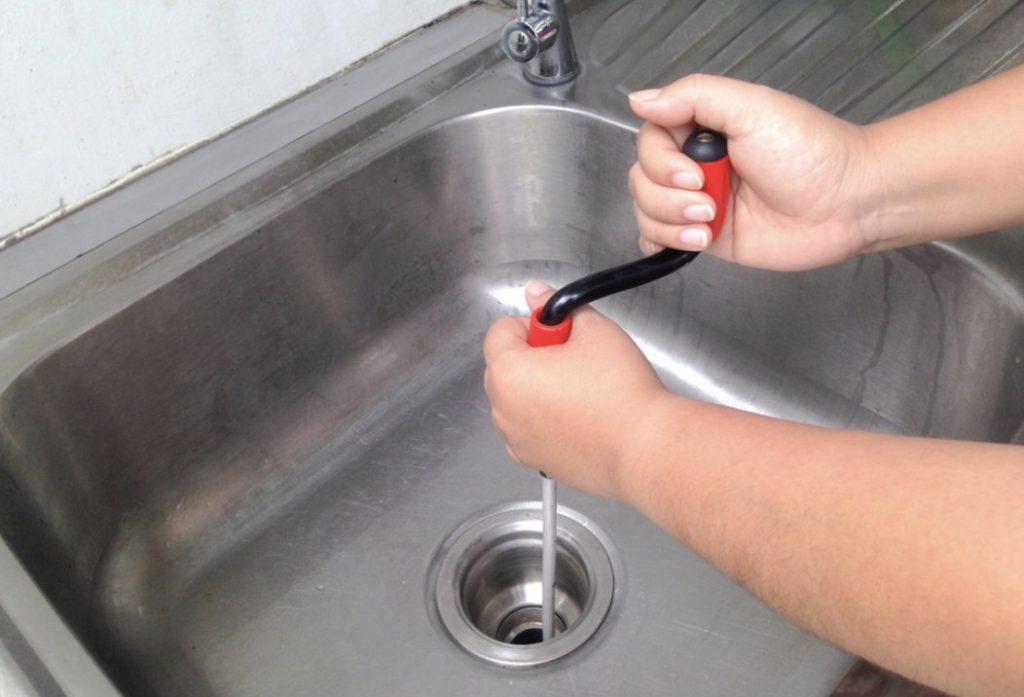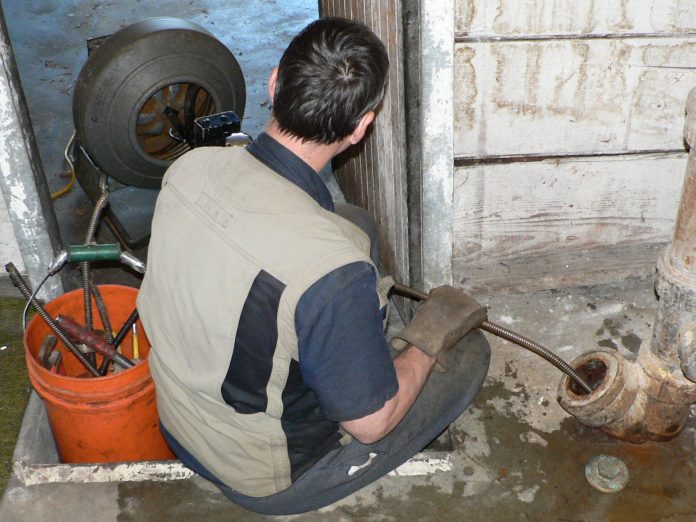A manual drain snake is a good option if you have a stubborn clog that you cannot reach with a plunger. A drain snake, also known as a plumber’s snake, is a tool that “snakes down” into pipes to clear clogs. Snaking a pipeline is a compromise between plunging or calling in the big guys such as professional, powered drain augers.

Although plumber’s snake can be more effective than plungers at clearing drains, they are also more difficult to use. It can be hard to maneuver them through tight turns and twists. Learn how your snake works, and how to properly use it. This is everything you need to know about drain snakes.
How to use a plumber snake (And what exactly is an auger anyway?)
An auger is a tool that bores into something. An auger can also be called a drill. A plumbing snake or auger is a long flexible metal cable that has a small uncoiled spring at one end and a handle at the other. The snake’s auger head looks like a corkscrew. The length of a home plumbing auger is typically between 20 and 50 feet. When you aren’t using the cable, it coils into a circular housing. The majority of home plumber’s snake can be operated by hand and include a crank or rotatable handle to move the cable. To navigate around tricky areas, you can spin the handle.
To snake a drain, you need to first enter the drain and physically touch it. Then, remove the obstruction that is causing the blockage. Start by inserting an auger head into your drain. Then, feed the snake manually until the clog is gone. The snake will continue to uncoil as it moves through the drainpipe until the blockage is removed. This is a detailed explanation of how to use the drain auger.
How to Use a Drain Snake
1.Don’t be afraid to get dirty in clothes and put some towels underneath the pipes that you are working on. Your snaking process could be messy depending on the nature of your clog. This is particularly important if the p-trap needs to be removed.
2. Optional, but highly recommended: Consider removing the trap. The p trap is the pipe that curves under the sink. It connects your sink to the larger drainpipe system of your home. It is curved to stop sewer gasses from escaping the sink and entering the home. P-traps are made of PVC pipes, but they can also be made from metal.
The p-trap can be manually removed using your hands or an adjustable wrench. After removing the p-trap you need to thoroughly inspect it and clean it. You may not need to snake if you have found the obstruction. This trick makes it easier to snake by removing the trap.
3. Optional You may need to remove the trap arm. The trap arm is the section of the pipe that connects the p-trap to the actual wall pipe. It holds the trap arm in place, and can curve again to reach the wall. You will need to look for a metal or plastic nut that connects the trap arm and the wall. To remove the trap arm, you will need to loosen it if you can’t find one. If it isn’t, it’s likely that the arm has been glued to the trap. Don’t try to remove it. After removing the trap arm, make sure to clean it out like you did with the p-trap.
The best way to access the drainpipe is to remove the trap arm. To find any obstructions, look inside the drainpipe. If the obstruction is visible, you can remove it from your location. If you are unable to see the obstruction, it is time to get your snake.
4. Thread the snake’s auger head into the pipe by hand. If you haven’t removed the trap, insert the snake head into the drain or wall access point. If the trap has not been removed, you can run cold water to the snake.
You should not push the auger too hard into the drain. This could cause damage to the pipe or drain entrance. Take your time and ensure that the cable and head are not too large for the drain you want to snake.
5. Start uncoiling your snake with the snake. The snake’s handle should be kept as close as possible to the pipe’s entrance. The more force you direct into the pipe, the less the auger will slack.
Slowly and steadily feed the line. You may feel resistance as the cable moves through the pipe.
6. Rotate the handle once you have reached the obstruction. Keep pushing while the head moves back and forth. You can try to remove the obstruction or turn the corner, but don’t stick the auger in the pipes. Stop snaking and adjust if you hear scraping sounds. You can make the crank turn more easily by using steady push-pull motions.
7. Take the snake out of the sink and reassemble it. Clean the obstruction from the auger head. You can remove the trap arm or p-trap and then re-install them.
8. Test the sink. The snake should have removed the obstruction and resolved the clogging issue. You can try again to remove the clog if you are still having problems. However, drain snakes can cause damage to your pipes and drains, just like plunging. If you still haven’t found the solution to your problem with a thorough snaking, it might be time for professionals.
This post was written by Joey Denick. Joey is the Owner and Operator of http://clogkingsllc.com/. At Clog Kings, LLC, we pride ourselves on our dedication and efficiency. We know you don’t have time to waste. That’s why we work fast to get your home or commercial building back up and running in no time. If you are looking for plumbers in St.Petersburg FL then look no further because we got you covered.
What to do if your drain snake gets stuck in the drain?
If you’re using a drain snake, there’s a chance that it can get stuck in the drain. When this happens, don’t panic. There are ways to remove the snake without damaging your pipes. Here are the steps to take if your drain snake gets stuck:
Stop Turning the Handle: When you notice the snake is stuck, stop turning the handle immediately. Continuing to turn the handle can make the snake more stuck and can cause damage to your pipes.
Try to Pull the Snake Back: First, try to pull the snake back gently to see if you can remove it. You may need to wiggle it back and forth a bit to loosen it. If this doesn’t work, try the next step.
Rotate the Snake: You can try rotating the snake clockwise and counterclockwise to see if that helps loosen it. If the snake is really stuck, try using a pair of pliers to turn the snake.
Add Lubricant: If the snake is still stuck, add some lubricant to the area where it’s stuck. This can help loosen the snake and make it easier to remove.
Use a Reverse Motion: Some snakes have a reverse motion option. If your snake has this option, try reversing the motion to see if you can remove the snake.
Call a Professional: If you’ve tried everything and the snake is still stuck, it’s time to call a professional. Trying to remove the snake yourself could cause further damage to your pipes, which will be more expensive to fix.
Read More: The Different Types of Plumbers















